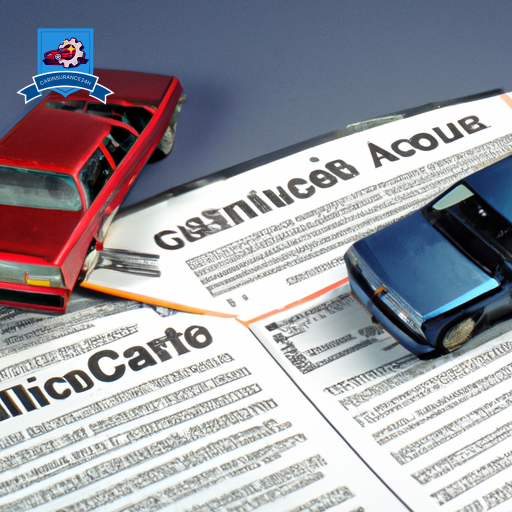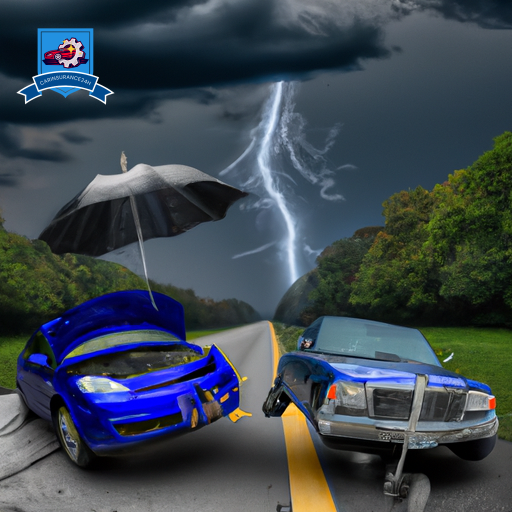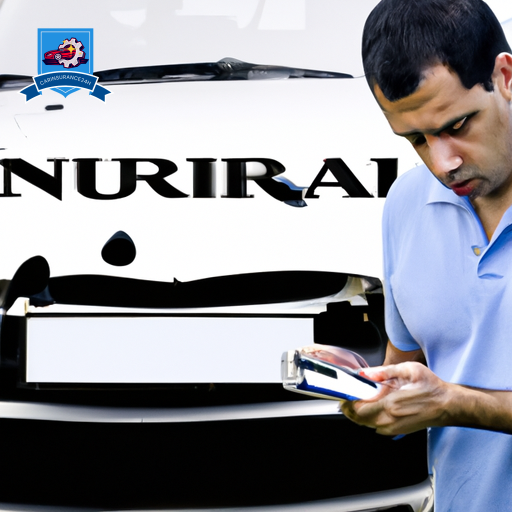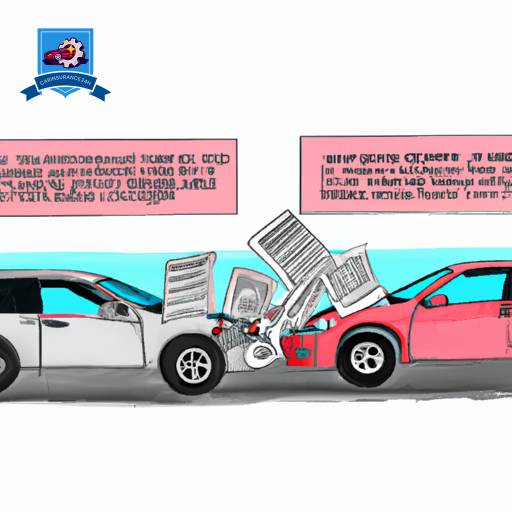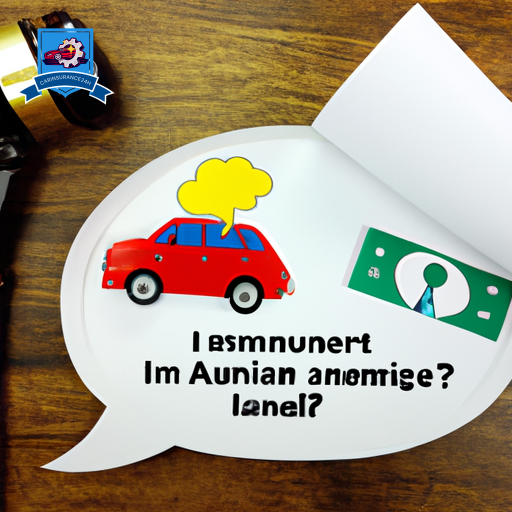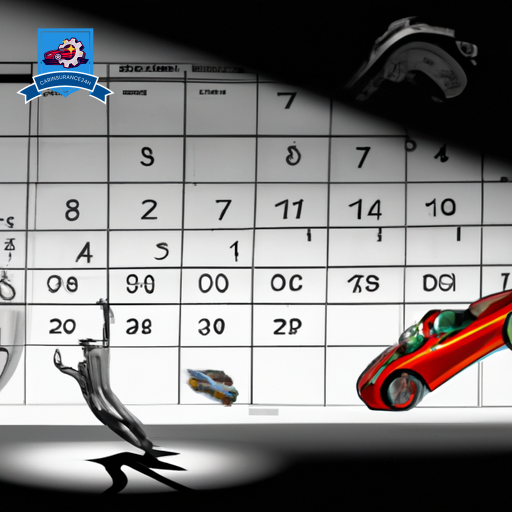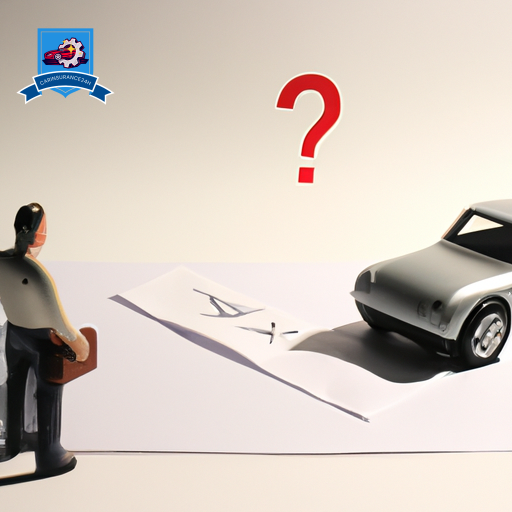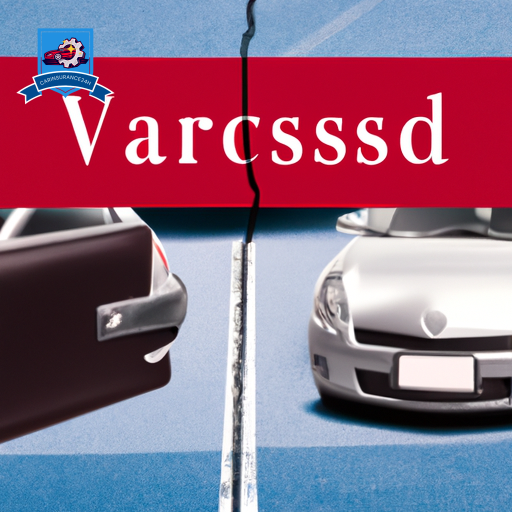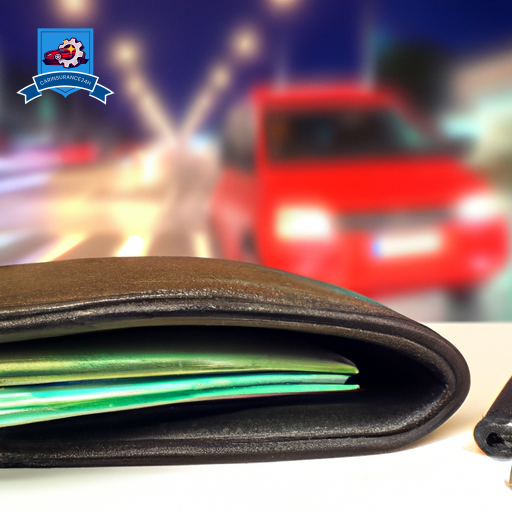Determining the appropriate level of underinsured motorist coverage necessitates a nuanced understanding of both legal requirements and personal risk factors. This type of insurance is instrumental in protecting individuals from financial strain following an accident with a driver whose insurance is insufficient to cover the damages incurred.
State mandates vary greatly, making it imperative to comprehend the legal minimums while also considering one’s own financial situation and potential exposure to risk. By examining the intersection of these elements, individuals can make informed decisions about their coverage needs.
The subsequent discussion aims to guide through this complex terrain, offering insights into how one might balance cost against the imperative for protection, amidst a landscape of ever-changing risk profiles and asset considerations.
Understanding Underinsured Motorist Coverage

Underinsured motorist coverage is a pivotal insurance provision designed to protect drivers when involved in an accident with someone who has insufficient coverage to cover the damages incurred. This coverage is critical in ensuring that victims do not bear the financial burden resulting from another driver’s lack of adequate insurance. Understanding the nuances of this coverage, including the various coverage types and policy exclusions, is essential for policyholders seeking to make informed decisions about their insurance needs.
Coverage types for underinsured motorist insurance typically fall into two categories: bodily injury and property damage. Bodily injury coverage provides compensation for medical expenses, lost wages, and pain and suffering when the at-fault driver’s liability limits are insufficient to cover these costs. Property damage coverage, on the other hand, pays for the repair or replacement of the vehicle and other personal property damaged in the accident. It’s important for policyholders to carefully consider the limits of their underinsured motorist coverage to ensure adequate protection.
Policy exclusions are also a critical aspect of underinsured motorist coverage. These exclusions can vary significantly between policies but often include scenarios such as accidents involving a vehicle owned by the policyholder but not listed on the policy, or incidents deemed intentional rather than accidental. Understanding these exclusions is vital to avoid unexpected coverage gaps that could leave policyholders vulnerable to significant out-of-pocket expenses.
State Requirements Explained

Exploring the terrain of underinsured motorist coverage necessitates an understanding of state-specific mandates and the advantages of optional coverage. Each state has established minimum coverage limits that drivers must adhere to, but the option to increase this coverage offers additional protection.
In this segment, we will investigate the compulsory coverage requirements and the potential benefits of electing for higher coverage limits.
Mandatory Coverage Limits
The specific mandates regarding underinsured motorist coverage vary widely across different states, reflecting a diverse landscape of legal requirements designed to protect drivers. These variations can have a major impact on policy cancellation and premium adjustments, necessitating a thorough understanding of state-specific regulations. Here’s a snapshot of mandatory coverage limits across a selection of states:
| State | Minimum Coverage Limit | Special Provisions |
|---|---|---|
| CA | $15,000/$30,000 | None |
| NY | $25,000/$50,000 | Must include SUM |
| TX | $30,000/$60,000 | Optional |
| FL | Not Required | PIP Instead |
| IL | $25,000/$50,000 | Must be offered |
Understanding these requirements is essential for ensuring compliance and optimizing coverage based on individual needs and state laws.
Optional Coverage Benefits
Beyond the mandatory requirements, exploring the domain of optional coverage benefits offers drivers additional layers of financial protection and peace of mind. These optional coverages, while not required by state law, can greatly enhance a policyholder’s security in the event of an accident involving an underinsured motorist.
By opting for these benefits, policyholders may also become eligible for policy discounts, further reducing their overall insurance costs. Moreover, the inclusion of optional benefits can streamline the claim process, ensuring a more efficient and less stressful resolution following an accident.
Understanding and selecting the right optional coverage benefits requires careful consideration of one’s personal driving habits, vehicle value, and financial resilience, ensuring a thorough protection strategy that extends beyond the minimum state requirements.
Evaluating Your Risk Profile

Evaluating your risk profile is a critical first step in determining the appropriate level of underinsured motorist coverage for your needs. This process involves a detailed analysis of various risk factors that can influence your exposure to drivers who may not have sufficient insurance coverage in the event of an accident. By understanding these risk factors, you can make an informed decision on the amount of coverage that best suits your situation, making sure you are adequately protected.
One of the primary risk factors to think about is your geographic location. Areas with higher rates of uninsured or underinsured drivers pose a greater risk to you and your property. Metropolitan regions, in particular, may have a higher incidence of underinsured motorists due to the dense population and the increased likelihood of accidents. Additionally, states with lower minimum insurance requirements can also contribute to a larger number of underinsured drivers on the road. This geographical aspect is critical in evaluating your risk profile, as it directly impacts your potential exposure to underinsured motorists.
Moreover, the frequency of your driving and the routes you commonly take can also play a significant role in evaluating your risk. High-traffic areas and lengthy commutes increase the probability of encountering underinsured drivers. By thoroughly evaluating these factors, you can tailor your underinsured motorist coverage to adequately protect against the financial risks associated with these scenarios. This proactive approach makes sure you are not left vulnerable to the potentially devastating financial consequences of an accident involving an underinsured driver.
The Role of Your Assets

Understanding the significance of your assets plays a crucial role in determining the necessary amount of underinsured motorist coverage to safeguard your financial stability. Your assets are not just indicators of your current financial health but also pivotal in shaping your investment strategies and understanding potential legal implications in the event of an accident involving an underinsured motorist.
| Asset Type | Consideration for Coverage |
|---|---|
| Real Estate | Equity in property can be at risk without adequate coverage. |
| Investments | Protecting investment returns requires strategic coverage decisions. |
| Savings Accounts | Directly vulnerable to being targeted for compensation. |
| Personal Property | High-value items may necessitate increased coverage limits. |
When evaluating the role of your assets in determining underinsured motorist coverage, it’s essential to think about how these assets can be affected in the aftermath of an accident. For instance, significant legal implications can arise if your assets are exposed due to inadequate coverage. This could potentially lead to liquidation of assets, such as real estate or investments, to cover expenses, thereby impacting your investment strategies.
Furthermore, understanding the potential vulnerability of your assets, such as savings accounts and personal property, underscores the importance of securing a coverage amount that aligns with your financial standing. This strategic approach not only protects your assets but also makes sure that your financial stability is not compromised.
Coverage Limits: A Deep Dive

Determining the perfect coverage limits for underinsured motorist insurance necessitates a careful analysis of one’s financial risk exposure and potential loss magnitude. When delving into this assessment, several factors must be weighed to guarantee adequate protection without overextending on premiums. The decision hinges not only on the individual’s financial standing but also on understanding how policy deductibles and claim processes influence overall coverage efficacy.
Here are key aspects to contemplate:
- Policy Deductibles: The amount you’re willing to pay out-of-pocket before your insurance kicks in can significantly affect your premium rates and the extent of your coverage. Higher deductibles typically lead to lower monthly premiums but increase your financial responsibility in the event of a claim.
- State Minimum Requirements: Each state has its own set minimums for underinsured motorist coverage. While adhering to these is mandatory, often they may not provide sufficient protection in serious incidents.
- Claim Processes: Understanding the intricacies of your insurance provider’s claim process can illuminate potential complexities or delays in receiving compensation, affecting your immediate financial needs post-accident.
- Future Income Protection: Especially for those in their prime earning years, the potential loss of future income due to an accident with an underinsured motorist can be devastating. Coverage limits should reflect the value of this risk.
Striking the right balance between adequate coverage and manageable premiums calls for a nuanced understanding of these elements. By carefully evaluating policy deductibles and the claim processes alongside personal financial risk exposure, individuals can tailor their underinsured motorist coverage to offer robust protection without undue financial strain.
Cost Vs. Protection: Finding Balance

In the area of underinsured motorist coverage, finding the balance between cost and protection is essential for financial and physical wellbeing.
This section will explore how to evaluate coverage needs effectively and implement affordable protection strategies.
Evaluating Coverage Needs
How does one navigate the delicate balance between cost and protection when evaluating underinsured motorist coverage needs? The key is to assess your financial situation and risk exposure meticulously.
Here are important considerations:
- Policy Discounts: Explore options that offer value without compromising on coverage quality.
- Claim Process: Understand how the insurer handles claims, as this can affect your experience during stressful times.
- Personal Financial Stability: Gauge your ability to absorb potential losses in the absence of adequate coverage.
- Risk Assessment: Consider the likelihood of encountering an underinsured motorist and the possible financial implications.
Affordable Protection Strategies
Balancing cost and protection in underinsured motorist coverage requires strategic planning to guarantee affordability without sacrificing essential coverage. To navigate this delicate balance, individuals should explore discount strategies that insurers offer. Many insurance companies provide discounts for safe driving records, multiple policies, and even for completing defensive driving courses. Utilizing these discounts can greatly reduce premiums while maintaining robust protection.
Additionally, considering policy bundles can offer another avenue for savings. Often, insurers will offer reduced rates for bundling underinsured motorist coverage with other policies such as homeowners or life insurance. This consolidation not only simplifies management of insurance policies but also stretches each dollar further, ensuring that individuals can secure thorough protection without breaking the bank.
Common Scenarios and Examples

To illustrate the importance of underinsured motorist coverage, consider the following common scenarios and examples. These real-life situations highlight potential policy gaps and underscore the significance of claim stories in understanding the necessity of adequate coverage.
-
A Severe Accident with Insufficient Coverage: Imagine being involved in a serious car accident where the at-fault driver has the state minimum liability coverage, which is insufficient to cover your medical bills and car repair costs. Underinsured motorist coverage can bridge the gap, making sure you’re not left paying out-of-pocket for expenses that exceed the at-fault driver’s policy limits.
-
Hit-and-Run Incidents: In many states, underinsured motorist coverage also applies to hit-and-run accidents. If the perpetrator is not found, you may have no other recourse for compensation for your injuries and damages without this coverage.
-
Pedestrian Accidents: If you’re struck by an underinsured driver while walking, your underinsured motorist coverage can provide compensation for your medical expenses and lost wages, even if you weren’t in your vehicle at the time of the accident.
-
Cyclist Collisions: Similar to pedestrian scenarios, cyclists hit by underinsured motorists can rely on their own policy’s underinsured motorist coverage to cover medical costs and other damages resulting from the accident.
These examples underscore the critical nature of underinsured motorist coverage in protecting yourself from unforeseen financial strain following an accident. Without sufficient coverage, individuals may find themselves facing significant financial challenges, underscoring the importance of evaluating your policy to make sure it meets your needs.
Adjusting Coverage Over Time
Understanding the significance of underinsured motorist coverage in various unfortunate scenarios lays the groundwork for the next important consideration: the need for periodically adjusting this coverage to align with changing life circumstances and risk profiles. This proactive approach guarantees your insurance protection evolves in tandem with your life, providing adequate coverage when needed most.
Policy renewal periods offer a prime opportunity for policyholders to reassess their underinsured motorist coverage. It is a time when individuals can review their current insurance policies, reflect on any significant life changes—such as purchasing a new home, changes in family size, or shifts in commute patterns—and determine if their current coverage levels remain appropriate. This process not only helps in maintaining relevant coverage but also in identifying potential coverage gaps that could expose policyholders to financial risks in the event of an accident involving an underinsured driver.
Additionally, conducting a coverage comparison during the policy renewal phase is essential. This comparison should not be limited to evaluating different insurance providers but should also involve analyzing variations in coverage options within your current insurance company. Such comparisons may reveal more advantageous terms or additional coverage benefits previously overlooked.
Fundamentally, adjusting your underinsured motorist coverage over time is not merely a recommendation but a necessity. It involves a systematic review of your insurance needs at each policy renewal, coupled with a thorough coverage comparison, to make sure that your protection keeps pace with the evolving landscape of your life and risks. This disciplined approach guarantees that you remain adequately covered against the uncertainties of the road, safeguarding your financial well-being against the repercussions of accidents with underinsured motorists.
Expert Recommendations
Exploring the complexities of underinsured motorist coverage, experts offer targeted advice to guarantee policyholders secure the protection they need. Given the varied nature of motor vehicle incidents and the financial instability they can precipitate, having adequate coverage is non-negotiable. Policyholders must navigate the intricacies of policy definitions and the claim process to make sure they’re adequately protected in the event of an accident with an underinsured driver.
To deepen understanding and aid in decision-making, consider the following expert recommendations:
- Thoroughly Understand Policy Definitions: Familiarize yourself with the terms and conditions of your policy. Knowing the specifics of what constitutes an ‘underinsured motorist’ and the scenarios under which your coverage applies is pivotal.
- Align Coverage with Personal Financial Situation: Evaluate your financial vulnerability in the event of an accident. Experts suggest that your underinsured motorist coverage should at least match your liability coverage to safeguard your assets effectively.
- Consider the Claim Process: Understand the steps required to file a claim under your underinsured motorist coverage. This knowledge will streamline the process, making it less challenging should the need arise.
- Regular Policy Review and Adjustment: As your financial situation and the legislative landscape evolve, so should your coverage. An annual review with your insurance professional can guarantee your policy reflects your current needs and the prevailing laws.
Adhering to these recommendations can markedly mitigate the financial risks associated with accidents involving underinsured drivers. By embracing a proactive approach to understanding and managing your underinsured motorist coverage, you position yourself to navigate the aftermath of such incidents with greater confidence and security.
Frequently Asked Questions
How Does Underinsured Motorist Coverage Interact With Health Insurance in the Event of an Accident?
Underinsured motorist coverage complements health insurance by safeguarding costs exceeding health deductibles and coverage limits after an accident. It guarantees financial protection against underinsured drivers, filling gaps not covered by one’s health insurance policy.
Can Underinsured Motorist Coverage Be Applied to Incidents Occurring Outside of My Home State or Abroad?
Underinsured motorist coverage, like a safety net stretching across borders, can extend to incidents outside one’s home state or even abroad, contingent on the policy limits and the provisions for international coverage outlined in the agreement.
How Does the Claims Process for Underinsured Motorist Coverage Differ From That of Standard Auto Insurance Claims?
The claims process for underinsured motorist coverage typically necessitates thorough claim documentation and a detailed review against policy limits, differing from standard auto insurance claims by focusing on discrepancies between incurred damages and the at-fault party’s coverage capacity.
In What Scenarios Can Underinsured Motorist Coverage Be Declined by an Insurer, and What Are My Options in Such Cases?
Underinsured motorist coverage can be declined due to policy exclusions or surpassing coverage limits. In such scenarios, exploring legal recourse or negotiating with insurers offers potential remedies. Structured, logical approaches are essential in handling these situations.
How Does Underinsured Motorist Coverage Impact Legal Proceedings if I Decide to Sue an Underinsured Driver for Damages?
Underinsured motorist coverage can influence legal proceedings by providing leverage in court strategies and settlement negotiations, potentially facilitating a more favorable outcome for the claimant by demonstrating additional financial backing for recovery efforts.


